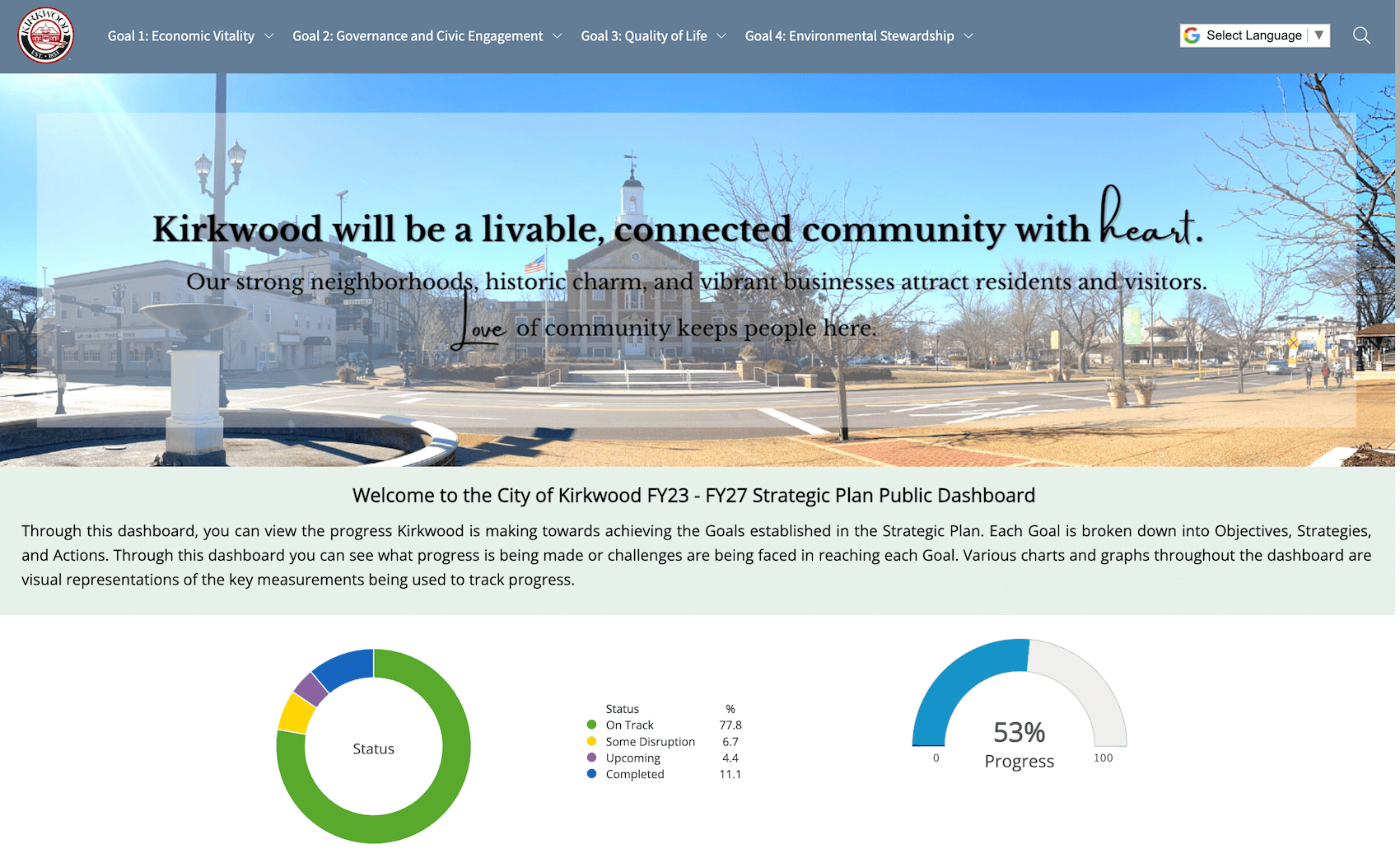Contents
Howdy, local government budgeteers! Budgeting Bear here, your friendly neighborhood priority-based budgeting expert and advocate for smarter, sustainable fiscal planning. I’ve got my paws firmly on the ground when it comes to local government budgeting, and I’d like to share some thoughts as we move into a fast-changing fiscal landscape in 2025 and beyond.
As the wave of federal funding from initiatives like the American Rescue Plan Act recedes, local governments and public sector organizations are feeling the financial pinch more than ever.
For many cities and counties, this means facing tough choices with limited resources. During these times, every dollar must count. From experience, we know that this often leads to hesitancy about investing in new tools or technology.
I get it. When the berry bush (the budget) is running low, it can be tempting to scratch software investments off the list. But this kind of short-term thinking can lead to some grizzly outcomes—like inefficiency, wasted resources, and diminished trust in government. Ultimately, real digital innovation is about streamlining services, and lowering the bear-iers of access to local government information.
Here’s four reasons why some software investments should stay in your budgeting den, even during lean times.
1. Maximize efficiency and leverage data
When resources are as scarce as honey in winter, you’ve got to stretch every drop.
Ideally, your strategic plan functions as a compass for your community, centralizing goals, tracking resources, and keeping operations aligned.
“Envisio also allows us to share the responsibility of moving our organization forward strategically, and giving everyone some sense of ownership over our strategic plan.
That sense of ownership is there at the district level, and at the building level. And you notice that people talk about the plan more in meetings.
There are more updates, they understand how the work they are doing is feeding back up into the strategic plan. That shared ownership is really important, and it has been an anchor for all of us in a time when it has been otherwise difficult to stay aligned.”
–Dr. Alison Gillespie, the Assistant Superintendent for Teaching and Learning, White Bear Lakes School District, MN
When we don’t have a lot to work with, it’s critical to avoid duplication and focus on what truly matters. That said, it’s important that we don’t just eliminate things based on perception alone. If we do, we risk losing programs and functions of our strategic or operational plan that are actually working really well–those that are making a big impact without necessarily getting big attention. This is where we can leverage data and use it to make smarter decisions.
A strategy software partner can help immensely in that. Particularly one that tracks performance and outcomes from different projects. That way, when it’s time to tighten the belt, you have easy visibility into what’s actually working—meaning, what’s delivering on desired outcomes.
In recent years, adopting a resource allocation model centered on desired outcomes and strategic priorities has been an increased subject of focus by local government budgeting professionals, software partners, and academic experts. The Rethinking Budgeting initiative, spearheaded by the Government Finance Officers Association (GFOA) has been a major driver behind this work to transform local government budgeting.
While it’s understandable to want to restrict spending during times of financial constraint, the reality is that by cutting investment into digital innovation or worse—removing software that you’ve already put time, money, and effort into implementing—you’re creating more cost, and ultimately more obstacles for achieving your community goals, not less.
2. Build trust with transparency
Community members are curious cubs, and they deserve to know how their tax dollars are working for them during times of financial constraint. In our experience, being open and clear with community members pays off in a real way. There is indeed an ROI on trust and transparency; it’s easier to get things done when your community believes in your vision, integrity, and your ability to execute.
A public dashboard is a great way to show what you’re doing, and get your community excited. For example, above, you can see how Kirkwood, Missouri is showing off their goals, all with strategic actions attached to them. My favourite is their environmental stewardship pillar…
Not to mention, having front facing progress can help with keeping employees engaged and on top of their next steps.
A good strategy and performance management software solution creates a clear trail of actions, outcomes, and next steps, showing real-time updates on progress toward your goals. When folks can see results, they’re going to be more likely to trust the budget decisions.
3. Resilience and preparing for the wild winters ahead
The forest of challenges facing local governments is dense: economic uncertainty, climate change, and more. A strategy and performance management platform should give you the tools to adapt to these shifting landscapes.
With data-driven scenario planning and performance tracking, your government stays agile and ready to pounce on problems before they become crises. Investing in resilience now means you won’t get caught unprepared when the next storm rolls in.
4. Sowing seeds for future growth
Local governments are responsible for nurturing economic growth and stability. A well-implemented strategy implementation system can boost efficiency in service delivery and economic improvement plans, which ultimately helps businesses thrive and attracts growth opportunities.
When budgets are tight, investing in digital services probably doesn’t seem like a priority. But the seeds of economic recovery lay in ensuring your city, county, or organization is functioning smoothly. A healthy digital ecosystem makes for a healthy community.
Austerity measures only take you so far.
If there is one thing I know as a bear, it’s that winter doesn’t last forever.
Don’t hibernate on investing in your community when that’s what it needs. It’s smart to keep transformative software tools in your budget.
Strategy and performance management software can be a compass in the woods, guiding your limited resources toward better decisions, efficiency, transparency, resilience, and growth. When local governments invest in innovation, they’re laying the foundation for brighter days ahead.





